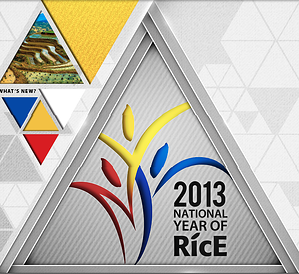 Since over half of the population relies on rice as a dietary staple, and one-fifth of the world’s population—over one billion people—depends on rice cultivation for their very livelihood, the quality and success of rice crops are vital to both the global food supply and the global economy.
Since over half of the population relies on rice as a dietary staple, and one-fifth of the world’s population—over one billion people—depends on rice cultivation for their very livelihood, the quality and success of rice crops are vital to both the global food supply and the global economy.
Additionally, the color of rice can play a large role in the value for farmers and millers. Different cultures value different kinds of rice, and white rice is incredibly valuable. This means the color of a crop of rice is extremely important to the value of a crop when brought to market.
It’s important to understand that white rice is a highly desirable product on the global market. Not only is milled, white rice more shelf-stable, but many cultures prefer the taste and texture of white rice. White rice takes about half the amount of time to cook, produces a milder flavor, and a softer texture. While some cultures prefer the nuttier, grainier sensations of brown rice, far more cultures opt for the subtle flavor and texture of white rice because it pairs so well with heavier flavors in all sorts of dishes. Additionally, white rice has more starch which produces a stickier quality. The taste, texture, and stickiness of white rice is valued by many cultures, namely Asian cultures, including China. As a country, China consumes more rice than any other country with 143 million metric tons consumed in a single year, and the wide majority of this rice is white.
Because white rice is so desired by so many, it also provides financial incentives for farmers and millers of rice to produce well-milled, white rice. How can you accurately determine the color of rice and therefore its market value? By testing samples during the milling process with a whiteness meter.
Analyzing the Quality and Value of Rice
High-quality rice is important for two main reasons. Rice is a major global food source; Many people rely on rice for the majority of their daily nutrients, and better rice is a richer, more sustaining food source.
Also, because rice is so important to the global economy, the higher a crop’s value, the more successful small farmers who grow rice and rely on the crop for their income can be. When preparing for sale, much of a rice crop’s white rice quality is analyzed in the following ways:
- Moisture
- Grain dimensions
- 1,000-grain weight
- Milling degree
- Milling recovery
- Dockage
- Head rice and broken grains
- Chalkiness
- Grain Shape
And very importantly:
- Whiteness
Whiteness often is measured in a rice crop to determine the milling degree, which is the percentage of brown rice milled and removed during the milling process. While some parts of the world prefer unmilled or less-milled rice, many parts of the world consider the color and consistency of the color (its whiteness) to be a measure of quality and purity.
This influences how a rice crop will sell, since rice that is not milled thoroughly enough will not cook the same way as milled rice. Under-milled rice is under-polished and has bran streaks left in it. These bran streaks decrease the longevity of the rice’s shelf life, which is bad for those who rely on rice for their nourishment and bad for those who rely on rice for their income.
To many people and cultures, under-milled rice also does not have as good of an appearance as "white" rice. This is why many in the industry value the whiteness of rice—because it has a better cosmetic appearance and a longer shelf-life.
The relationship between rice and its whiteness is a complicated one. Modern milling processes polish rice grain and remove bran, which also removes a lot of the nutritional value found in rice like fiber, protein, minerals like selenium and manganese, and fatty acids. While all of this nutrition is removed from rice when it is polished, it also makes rice more shelf stable; it can be stored for months at a time, making it financially desirable to farmers and mills.
The naturally occurring color of rice also can be affected after the rice has been harvested, which is important for buyers and consumers to know. The entire rice grain can become discolored if wet paddy is left for days before drying. The wet grain will heat up, and grains will turn yellow or tan instead of their desired white color.
An instant whiteness meter like the C600 is a very important indicator of the value of the rice grain. This meter has been recognized as the worldwide standard in whiteness measurement. You can use a whiteness meter to ensure the best value and the fairest sale of rice, while trusting the results to be accurate.
Ensuring the Profits
The whiteness level of a particular crop of rice is a major influence on the grade the rice is given. The USDA has created a grading system for rice, and this helps both buyers and farmers determine the quality of rice before it is sold.
As a farmer, you can use the rice whiteness meter to discover the optimum time to harvest rice before drying and milling (This is a continuation of the information linked in the previous paragraph- information sourced from your blog. I added a link so that tracking the info is clearer to the reader). This ensures the best possible crop, which ensures the highest possible selling price. As a buyer, a whiteness meter helps you determine the actual value of rice so you can pay a fair price for the quality of the crop.
The USDA also has determined “price discounts” per bushel based on the grade of the rice. As a farmer, you can use the whiteness meter to grow and yield the highest quality, most profitable crop, and as a buyer, a whiteness meter will help you arrange the best price.
Dealing in rice flour? There’s a tool for that too. The powder whiteness tester, the C130 model, can gauge the whiteness levels in rice flour as well as wheat flour, starch, salt, sugar, calcium carbonate and even some pharmaceuticals. This helps you pay the fairest price and secure the highest profits in your sale of rice or wheat flour.
Whether you are buying or selling rice, flour or sugar, you can depend on a whiteness meter to accurately determine the value.
Is a whiteness meter right for you? Let’s talk. Contact us today, and let’s discover which tools can help you grow, sell or buy the highest quality crop at the most profitable price.


